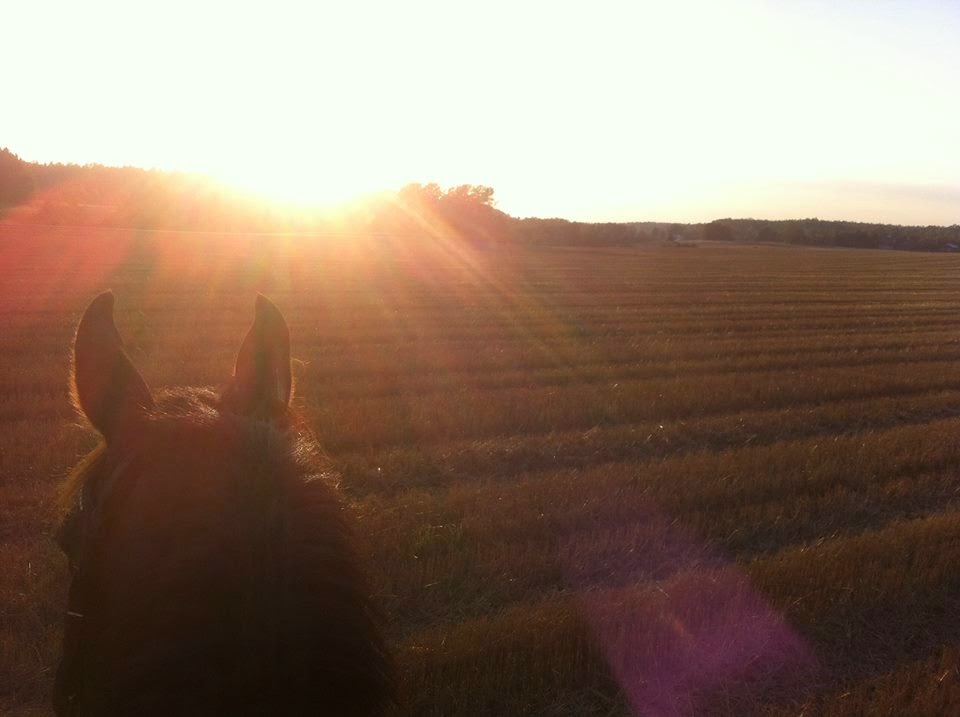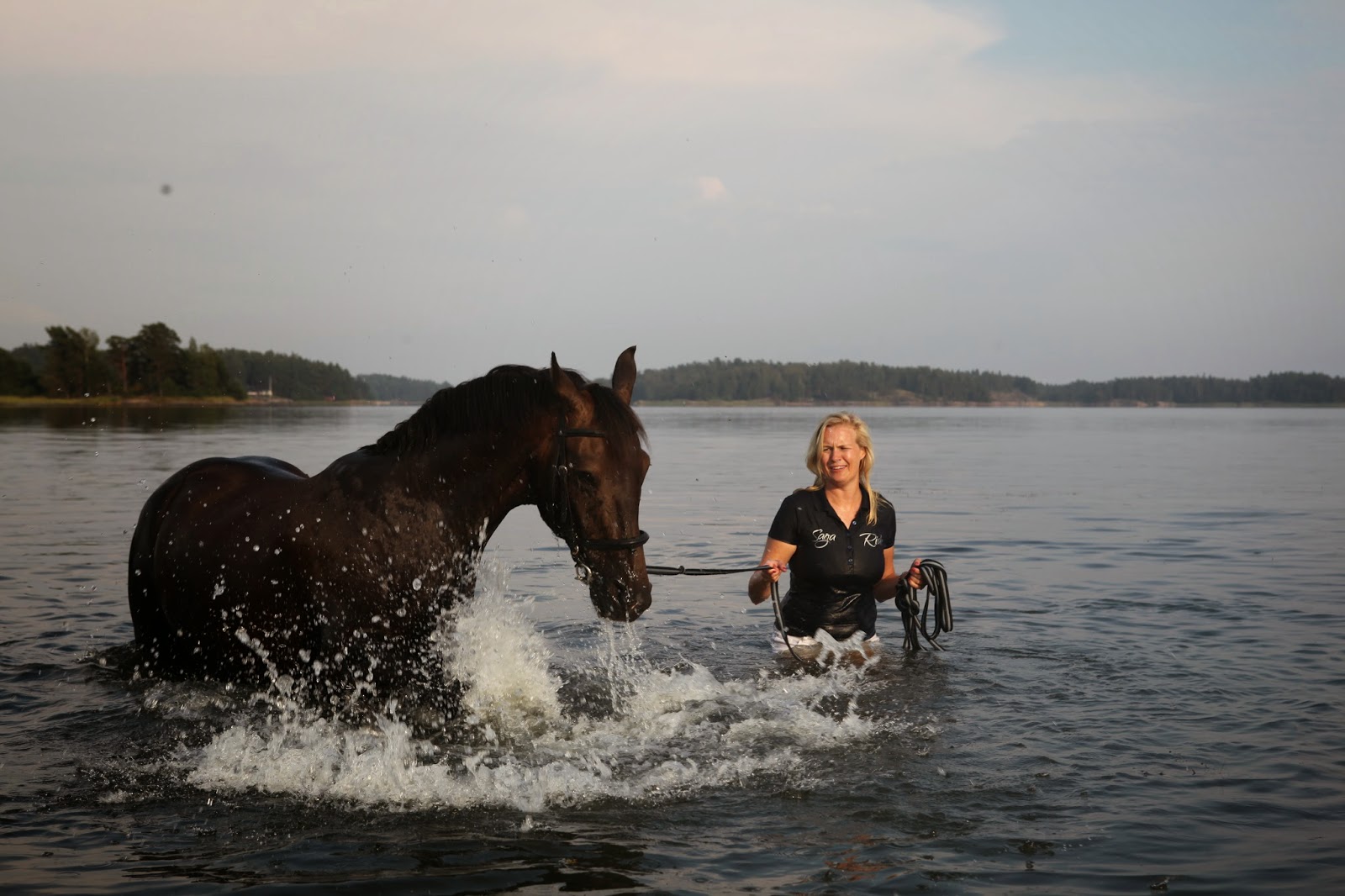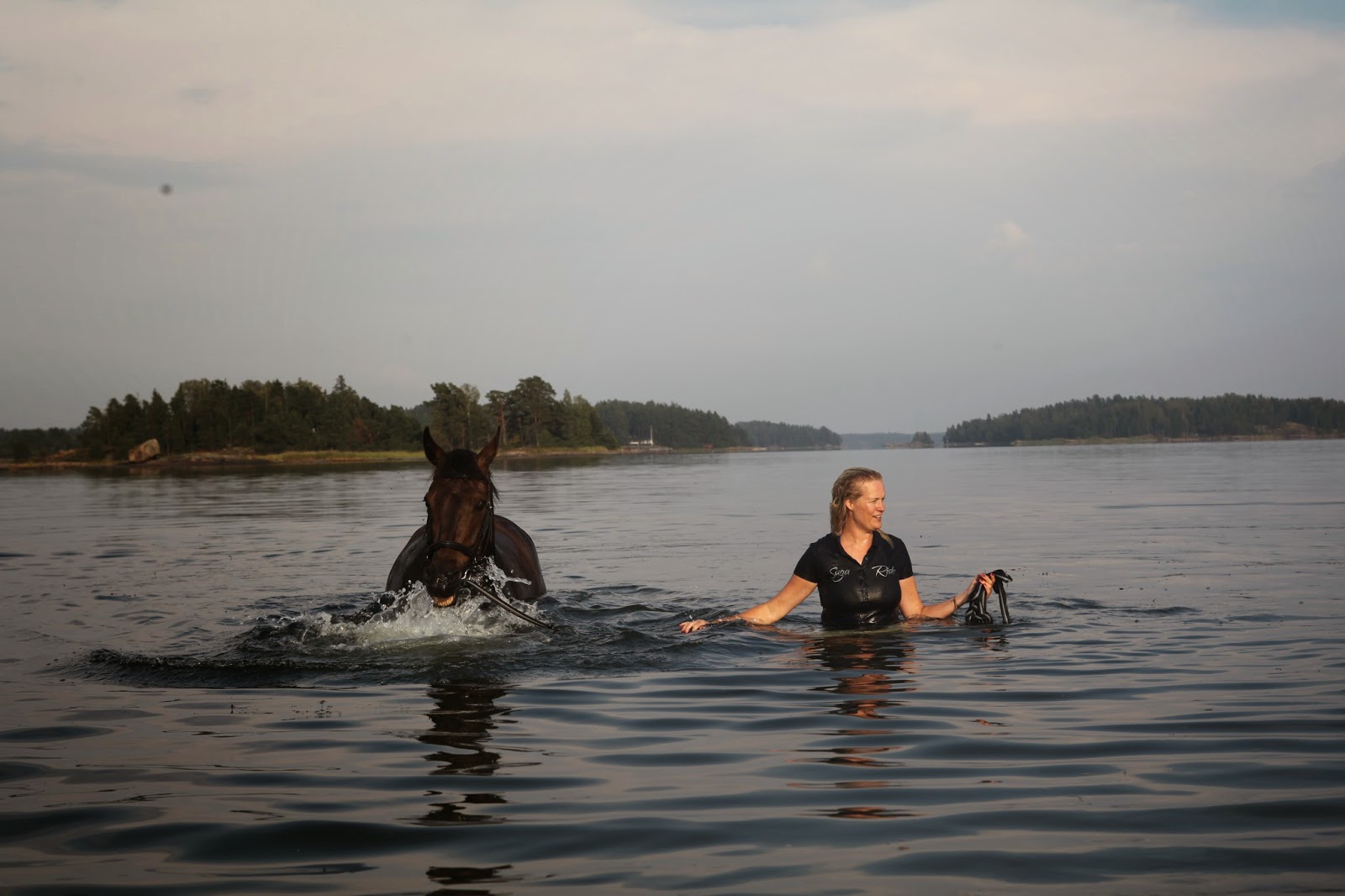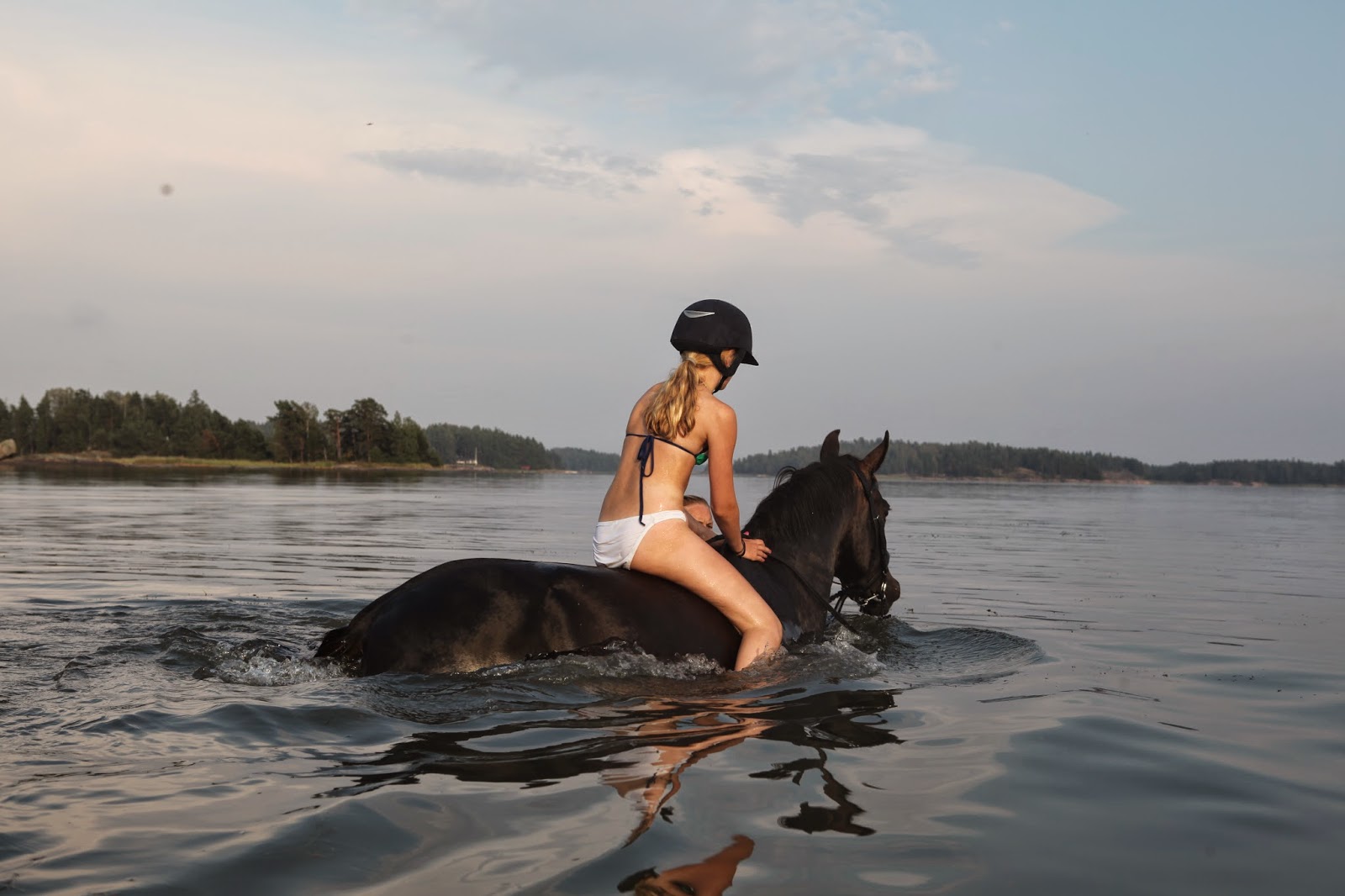Turhaan tuli stressattua muuttoa. Thor saapui tänään Peuramaalle hymyssä suin ja oli kuin kotonaan heti ensimmäisestä hetkestä. Kertoi pari kertaa vierustovereilleen Inkoon kukkulan kuninkuudesta ja jäi sen jälkeen rauhassa mutustelemaan mukana tuomaani ruohoa.

Viime viikolla käytiin sänkkärillä ja keskiviikkona juoksutin oikein kunnolla läpi ja käytin puomeja apuna. Eilen Salla ilmoitteli, että Thor oli ollut kovin seesteinen ja mukava ratsastaa ja tänään Thor oli aivan super ihana Johannan tunnilla. Totesimme yhteistuumin, että Thorin kanssa kannattaa ensimmäkseen rellestellä ja tulla aina välillä nautiskelemaan tunneille upeasta askelluksesta. Thorin selässä oli hyvin liikettä tänään ja laukka rullasi lopulta erityisen hyvin. Meillä oli myös käytössä uusi Sprengerin kuolain enkä osaa sanoa oliko kuolaimen kanssa mitään eroa, mutta onpa taas mitä vaihdella hampaiden takia.
Viikonloppu on sujunut ystävien kanssa illallisilla ja perjantaina kävin yin joogassa ja tänään aloitin aamun aikaisin Lauttasaareen juuri avatussa Merijoogassa. Koska rakastan joogaa melkein yhtä paljon kuin hevosia, niin helpottaa kovasti kun upea studio on avattu kotikonnuille. Tänään vuorossa oli dynaaminen air jooga ja sen pitäisi olla pakollinen kaikille ratsastajille. Tuollaisen vartalon avaamisen jälkeen saisi elefantin tekemään piaffia. Niin suora ja vahva tunne tulee omaan vartaloon. Vaikka sitä välillä melkein huusi kärsimyksestä, kun teki lantiota avaavia liikkeitä. Ne kun tuntuvat ratsastajilla jumiutuvan erityisen paljon.
Joogasta suuntasin kodin kautta tallille ja Thor sai vielä hengailla laitumella ennen Johannan tuntia. Tunnin jälkeen kunnon sapuskat ja sitten matkaan. Onneksi maailman paras Tiina oli mukana, joten saimme kaikki tavarat pakattua yhdessä (mistä sitä tavaraa kertyykään?). Thor oli sitä mieltä, että traileriin ei tarvinnut mennä, joten laitoimme pari liinaa sivuista eikä asiasta enää tarvinnut keskustella. Thor matkusti kuin mikäkin prinssi ja oli tosiaan saapuessaan Peuramaalle hyvin rauhallinen. Koska Thor tuntui viihtyvän niin hyvin, sovimme että tallin omistaja Minna juoksuttaa Thorin huomenna ja menen käymään vasta tiistaina. Yritän pitää maanantain meidän kaikkien vapaapäivänä.
Tavoitteellisempaa treenaamista
Kuten olette ehkä lukeneet, olen jo viime talvella miettinyt treenimahdollisuuksia muualla talven yli koska vaikka rakastamme "kotiamme" Inkoossa on sinne talvella todella pitkä matka. Sitten kun siihen lisää vielä kävelyn maneesiin pimeällä niin tuntui vain siltä, että nyt olisi mukava päästä lähemmäksi kun arki on taas pyörähtänyt käyntiin.
Ajatuksenahan oli mennä Inkooseen vain kesäksi laitumelle koska asumme siellä kesäkuukaudet, mutta koska viihdyimme niin hyvin jatkoimme oleskelua ja kuukausi vierähti kahdeksi vuodeksi. Thorille nämä vuodet ovat tehneet todella hyvää. Ei vain Thorin lihaksiston kehityksen kannalta vaan myös henkisen kasvun osalta. Thor on rauhoittunut silminnähden ja meillä on ensisijaisesti ollut todella hauskaa. Paikkaa ja sen ihmisiä tulee kova ikävä. Ja viisasta herrasmiestä Obelixia tietenkin.
Kun Cinya ja Eca muuttivat Peuramaalle tarjoutui meille myös mahdollisuus muuttaa sinne. Halusin kuitenkin vielä pitää Thorin laitumella syyskuun koska ilmat ovat olleet niin suotuisat, joten päädyimme muuttamaan lokakuun alkupuolella. Koska Thor on mielestäni sellaisessa lihaskunnossa, että treenien vaatimustasoa voi hieman nostaa tuntuu Peuramaa juuri oikealta paikalta tähän elämäntilanteeseen. Pääsemme valmentautumaan säännöllisesti Minnan kanssa ja Sari Pakula tulee suoristamaan ja auttamaan istunta-asioissa. Minulla on myös mahtava henkinen valmentaja Anna Andersen, joka auttaa kehittymään sillä puolella, joten sanoisin että täksi talveksi paketti on kasassa. Paikan päällä on myös monta hyvää kengittäjää, joten eipä tarvitse sitä osa-aluetta stressata vähään aikaan. Thorin kengät ovat nyt pysyneet hienosti jalassa eikä voi edes ymmärtää miten ongelmallinen tilanne oli kesällä.
Thor saa nyt olla hieman säännöllisemmässä treenissä talven yli ja Minna ratsuttaa Thoria mikäli en pääse paikan päälle. Yritämme myös kokeilla Thoria yhteen Ecan kanssa ja eiköhän tallista muuten löydy joku muu hauska tarhakaveri. Kesäksi lähdemme tietenkin taas laitumelle koska siitä idyllistä en hevoseni suhteen kyllä tule ikinä joustamaan. Mutta nyt keskitytään valmentautumaan säännöllisesti ja nautitaan Peuramaan upeista puitteista.


















.JPG)


































































